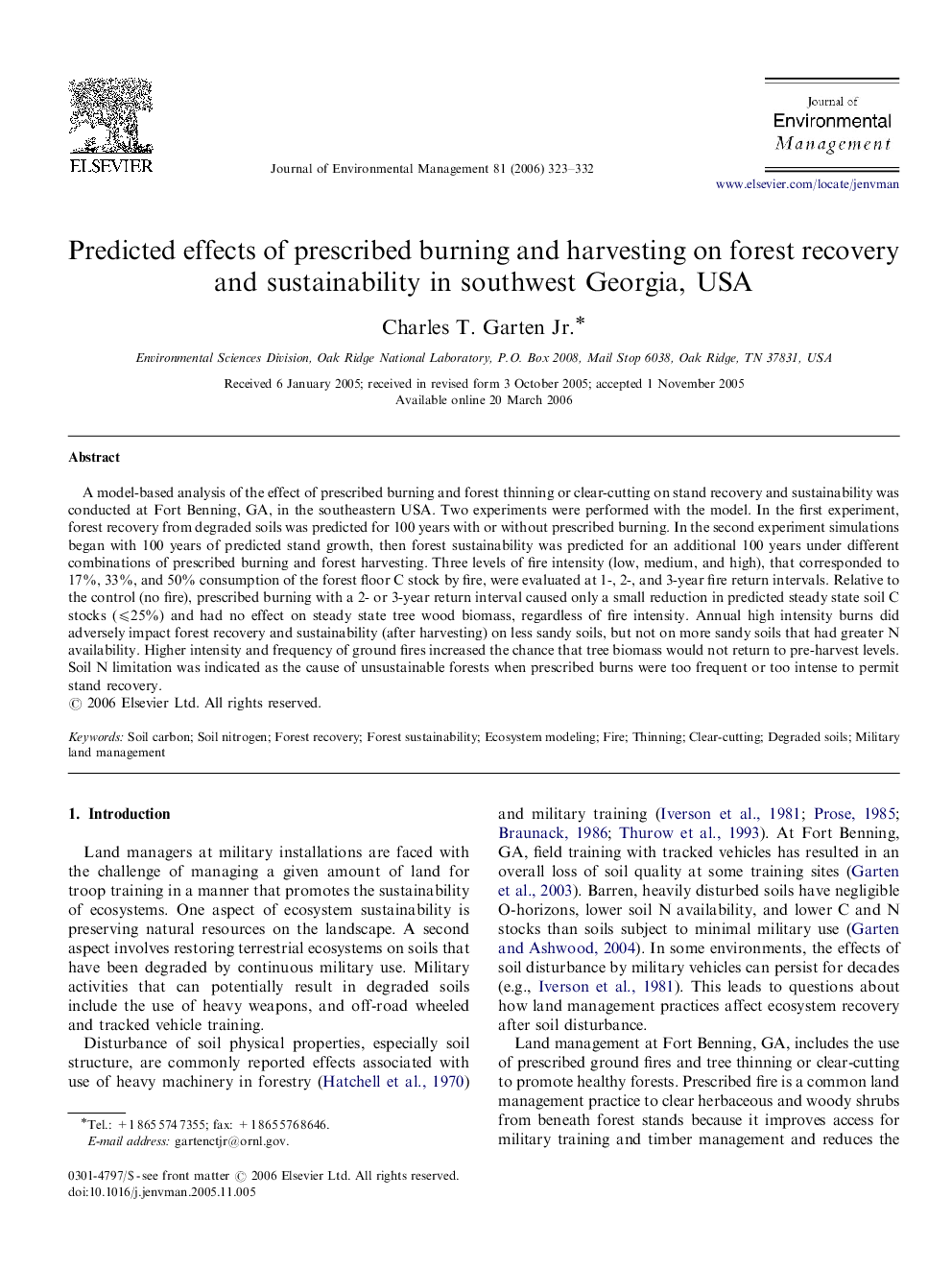| کد مقاله | کد نشریه | سال انتشار | مقاله انگلیسی | نسخه تمام متن |
|---|---|---|---|---|
| 1058948 | 947160 | 2006 | 10 صفحه PDF | دانلود رایگان |

A model-based analysis of the effect of prescribed burning and forest thinning or clear-cutting on stand recovery and sustainability was conducted at Fort Benning, GA, in the southeastern USA. Two experiments were performed with the model. In the first experiment, forest recovery from degraded soils was predicted for 100 years with or without prescribed burning. In the second experiment simulations began with 100 years of predicted stand growth, then forest sustainability was predicted for an additional 100 years under different combinations of prescribed burning and forest harvesting. Three levels of fire intensity (low, medium, and high), that corresponded to 17%, 33%, and 50% consumption of the forest floor C stock by fire, were evaluated at 1-, 2-, and 3-year fire return intervals. Relative to the control (no fire), prescribed burning with a 2- or 3-year return interval caused only a small reduction in predicted steady state soil C stocks (⩽25%) and had no effect on steady state tree wood biomass, regardless of fire intensity. Annual high intensity burns did adversely impact forest recovery and sustainability (after harvesting) on less sandy soils, but not on more sandy soils that had greater N availability. Higher intensity and frequency of ground fires increased the chance that tree biomass would not return to pre-harvest levels. Soil N limitation was indicated as the cause of unsustainable forests when prescribed burns were too frequent or too intense to permit stand recovery.
Journal: Journal of Environmental Management - Volume 81, Issue 4, December 2006, Pages 323–332